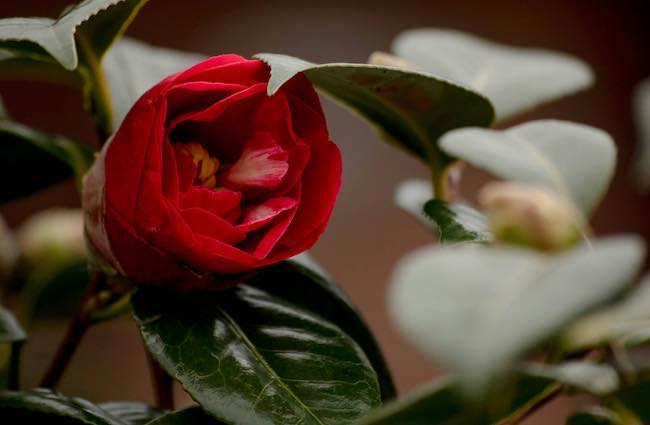Caring for a Mature Camellia After Moving A Comprehensive Guide

Relocating a mature camellia is a task that requires careful attention to ensure the plant’s successful adaptation and continued health. Understanding the significance of the camellia and the stresses involved in moving such a plant is the first step in providing the appropriate care it needs to thrive in its new environment.
Immediate Post-Move Care
The initial weeks following the relocation of your camellia are crucial. To mitigate the stress associated with root disturbance, it is imperative to provide ample water. Regular watering, ideally daily, is recommended during the first couple of weeks to prevent dehydration and support the camellia’s efforts to reestablish its root system in the new location.
Transitioning to Subsequent Care
After the initial intensive watering phase, you should gradually reduce the watering frequency to once every two days. This adjustment is necessary to encourage the plant to develop a robust root system capable of sourcing its water, reducing the risk of water stress in the future.
Monitoring Plant Health
Observing your camellia for signs of adaptation or distress is key to determining whether additional care is needed. New growth is a positive sign of adaptation, whereas yellowing leaves can indicate stress. However, some leaf drop is normal as the plant adjusts to its new setting by reducing its water loss.
Protective Measures
Mulching and stem protection are critical aspects of caring for a recently moved camellia:
- Mulching: Apply a layer of well-rotted beech leaves or similar acidic mulch around the plant’s base. This practice helps maintain soil moisture, ensures consistent root temperatures, and contributes to the necessary acidic soil conditions for camellias. Spread the mulch evenly, avoiding direct contact with the stem, to prevent potential rot and extend out to the drip line to cover the root area effectively.
- Stem Wrapping: To reduce water loss and shield the stems from extreme temperatures, wrapping the larger stems in hessian sacking is advised. This method provides a protective barrier, helping to maintain moisture levels within the plant.
Long-Term Care and Maintenance
Ensuring your camellia thrives in its new location involves ongoing attention to watering, soil conditions, and protective measures. While the plant establishes itself, continue to monitor its health, adjusting care as necessary to promote robust growth and blooming.
In conclusion, the successful relocation of a mature camellia hinges on immediate and attentive care post-move, gradual transition to regular maintenance, and vigilant monitoring of the plant’s adaptation. By following these guidelines, gardeners can enjoy the beauty and resilience of their camellias for years to come.